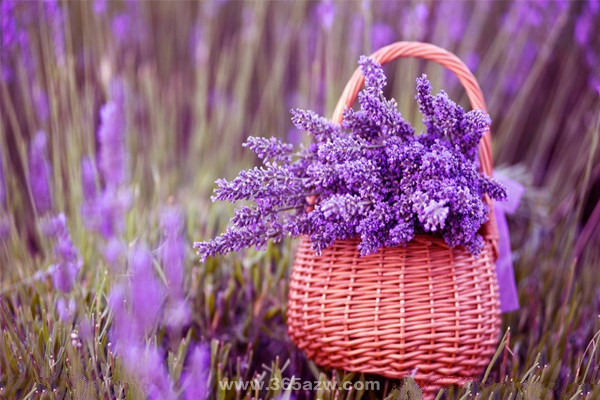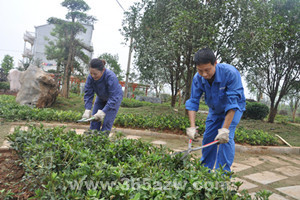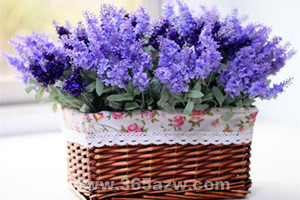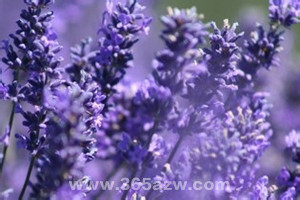A complete knowledge of lavender maintenance
Lavender is the most popular vanilla plant in the world, originated in France, the Netherlands and other European countries, including nearly 100 different varieties. This kind of plant has high ornamental value and extensive commercial value in various fields. This article mainly explains the maintenance and management of lavender.

Pruning
The newly planted lavender grew slowly in the early stage. With the rise of spring temperature, lavender entered the green period in mid-April. in order to promote the branch and root development of lavender, artificial pruning should be carried out from the end of April to the first ten days of May, that is, the top branches above 15cm above the ground should be trimmed and stubble, heavy pruning in the middle of the plant and light pruning around.

Management of budding and flowering period
The first crop of lavender flowers entered the budding stage in late May and in full bloom in late June. In the first year of planting, in order to promote the branch growth of lavender seedlings and reduce nutrition consumption, the first buds can be knocked off in early June. The second crop of flowers entered the budding stage in mid-August and was in full bloom in mid-September. In the case of good climatic conditions in autumn, the third stubble flower was in full bloom in the middle of October.

Weeding with water and ploughing
For newly planted lavender, adequate irrigation should be ensured in the first three years to promote plant growth. In the middle and last ten days of April every year, lavender should be watered in time during the turning green period. According to the weather conditions and soil moisture, water should be watered 6-8 times a year. Attention should be paid to watering bud water and flowering water. Water should be watered evenly and thoroughly to ensure watering quality. Combined with each irrigation and timely ploughing, to achieve the purpose of preserving soil moisture, increasing temperature and weeding, generally ploughing and weeding 5-7 times a year. Overwintering water is irrigated in the first and middle of November.
Topdressing
Although lavender has strong resistance to barren and drought, it needs to supply relatively more water and fertilizer in order to promote the rapid growth and yield of lavender after planting. Newly planted lavender should be fertilized early within 3 years after planting. Fertilize frequently. Combined with the first irrigation, the first flower bud stage, combined with watering urea 15kg per mu, diammonium phosphate 10 kg; topdressing urea 10kg per mu, artificial hole application next to the plant.
Management before overwintering
The winter is long and the temperature is low. Field experiments show that artificial burying must be carried out before overwintering to ensure that lavender can survive the winter safely in this area. That is to say, after overwintering water in early November, the branches of lavender more than 15-20cm above the ground were pruned with flat stubble, and then surrounded with soil and buried with soil thickness of about 15cm, so as to ensure that the base of the trees would not suffer frost damage. Note that the buried soil should be neither too thick nor too thin. In the following spring, before pouring back the green water, pick the soil and release the seedlings in time, that is, remove the covered soil on the plant to prevent the branches and leaves from mildew and rot in the soil.
Harvest
The suitable harvest time is the full flowering stage, that is, when 70% of the florets bloom, the harvest is too early or too late, which will affect the yield. The first stubble flowers are generally from late June to mid-July, and the second stubble flowers are from late September to early October. The yield should be predicted before harvest. Weeds and excessive stems and leaves should not be carried during harvest, so as not to affect the quality of the oil. After harvest, you should choose a sunny day after 10:00, such as big dew in the morning or cloudy days should not be harvested. The stronger the light, the hotter the day, the higher the oil production rate. Do not pile up too thick when transporting and drying flowers to prevent heat and self-steam. it must be finished on the same day of harvest.

Related
- Wuhan Hospital Iron Tree Blooming Result Was Instantly Frightened by the Gardener Master
- Which variety of camellia is the most fragrant and best? Which one do you like best?
- What is the small blue coat, the breeding methods and matters needing attention of the succulent plant
- Dormancy time and maintenance management of succulent plants during dormancy
- Minas succulent how to raise, Minas succulent plant pictures
- What are the varieties of winter succulent plants
- How to raise succulent plants in twelve rolls? let's take a look at some experience of breeding twelve rolls.
- Attention should be paid to water control for succulent plants during dormant period (winter and summer)
- Watering experience of twelve rolls of succulent plants
- Techniques for fertilizing succulent plants. An article will let you know how to fertilize succulent plants.



